
Hollywood has always been a place where imagination meets audacity, especially when it comes to action sequences that push the boundaries of what’s possible on screen. From semi-trucks flipping in the heart of a bustling city to vehicles launching off cliffs, filmmakers have consistently gambled big bucks for those jaw-dropping moments that leave us breathless. But beyond the explosions and the screeching tires, there’s a crucial question that often pops up: do these multimillion-dollar stunts actually deliver enough bang for their massive buck?
In an age where digital wizardry can create almost anything, there’s still something undeniably special about a practical effect. The raw thrill of knowing that a stunt performer or a legendary star is genuinely putting their neck on the line, or that real vehicles are being pushed to their absolute limits, resonates deeply with audiences. It’s that blend of technical genius and sheer guts that makes these moments unforgettable, proving that some things simply can’t be faked by CGI alone.
So, buckle up, because we’re about to take an exhilarating ride through some of the most expensive and truly epic car stunts ever committed to film. We’ll peel back the layers to discover what these cinematic marvels cost, how they were pulled off, and whether their monumental price tags were ultimately worth the unforgettable on-screen spectacle. Get ready to dive into the world where rubber met road in the most spectacular and costly ways imaginable.
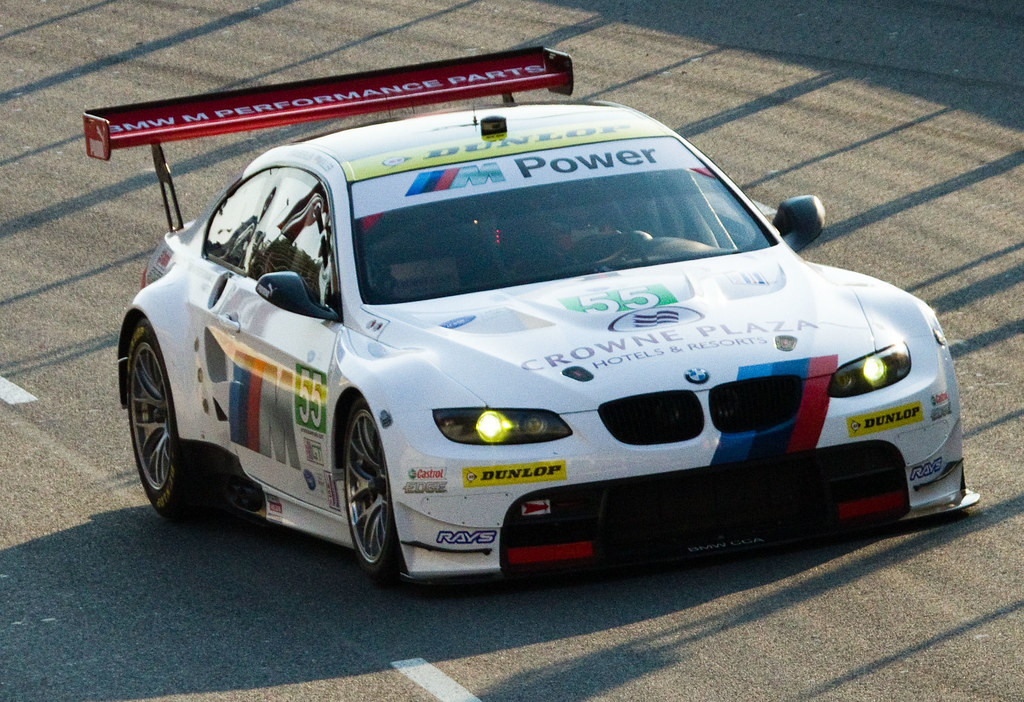
1. **Fast Five (2011) – The High-Speed Train Heist and Canyon Jump**When you think of the “Fast & Furious” franchise, you immediately envision cars doing things that defy logic and gravity, often with a price tag to match. “Fast Five” really dialed up the insanity, delivering one of its most memorable and costly sequences with the high-speed train heist and subsequent canyon jump. This wasn’t just another car chase; it was an ambitious spectacle that redefined what audiences expected from automotive action.
The creative team didn’t hold back, opting for extreme realism over digital shortcuts for a significant portion of the scene. The stunt involved the actual destruction of real train cars, which is a logistical and financial undertaking of monumental proportions. Watching vehicles launch off cliffs into the void was another component, creating adrenaline levels like no other and pushing both the limits of filmmaking and the nerve of everyone involved on set.
The cost for this entire sequence was a staggering $25 million, a sum that truly reflects the scale and ambition of the production. While not every blockbuster bang translates directly into a box office boom, “Fast Five” certainly defied that notion. This particular stunt delivered a pivotal moment in the franchise, contributing to its massive commercial success and solidifying its reputation for outlandish, yet incredibly entertaining, practical vehicular mayhem. It’s safe to say, this one paid off handsomely.

2. **Spectre (2015) – The Rome Car Chase**James Bond films are synonymous with high-stakes action, exotic locations, and, of course, incredibly slick car chases featuring equally slick vehicles. In “Spectre,” the stakes were raised even higher with an astonishing car chase through the ancient, winding streets of Rome. This wasn’t merely a pursuit; it was a ballet of destruction and precision, showcasing Bond’s relentless drive and the filmmakers’ commitment to jaw-dropping practical effects.
The sheer audacity of the stunt involved not just high-speed driving, but the deliberate smashing of priceless cars, a detail that makes any car enthusiast wince and marvel simultaneously. Logistically, pulling this off meant shutting down significant portions of Rome, including areas around Vatican territory. Imagine the permits, the coordination, and the sheer number of personnel required to orchestrate such a massive undertaking in one of the world’s most historic cities.
This luxurious destruction came with an equally luxurious price tag: $32 million. The investment was clear on screen, as the sequence delivered a sophisticated blend of speed, chaos, and cinematic artistry. It reinforced Bond’s enduring appeal and provided a platinum-level spectacle that, despite its massive cost, was considered essential to the film’s grandeur and its contribution to the franchise’s legacy of unforgettable action.
Read more about: Hold Up! These 14 Movie Sequels Absolutely Crushed Their Originals, And We’re Here For It!
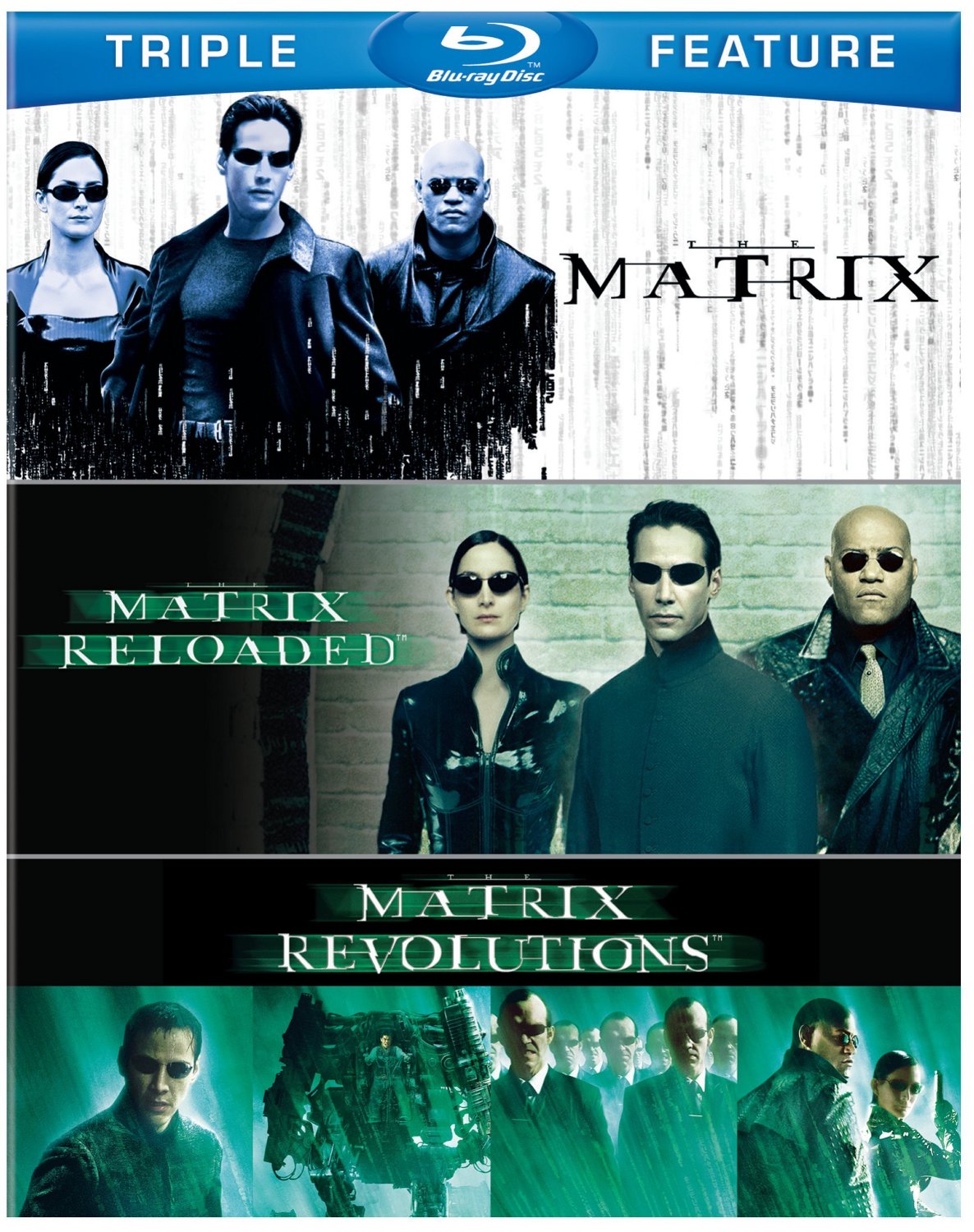
3. **The Matrix Reloaded (2003) – The Highway Chase**”The Matrix” franchise captivated audiences with its revolutionary visual effects and philosophical depth, but it also delivered some of the most innovative and expensive action sequences of its time. “The Matrix Reloaded” took things to a whole new level with its iconic highway chase, a sequence so ambitious that it demanded an extraordinary approach to filmmaking.
To achieve the specific vision for this scene, the production team made an unprecedented decision: they literally built a 1.5-mile stretch of highway on a decommissioned naval air base, solely for the purpose of wrecking it. This allowed for unparalleled control over the environment and the stunts, featuring custom-built cars designed for specific crashes, slow-motion carnage, and that unforgettable truck flip for the ages. It was an ode to overkill, executed with meticulous precision.
This monumental undertaking came with a price tag of $10–15 million, a sum that highlighted the filmmakers’ commitment to pushing the boundaries of what was possible in action cinema. The highway chase remains a benchmark for practical and digitally enhanced stunts, proving that when creativity and budget align, truly game-changing sequences can emerge. It was a testament to the belief that the spectacle could, and should, be as groundbreaking as the story.
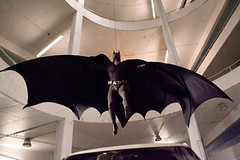
4. **The Dark Knight (2008) – The Tractor Trailer Flip**Christopher Nolan’s “Batman Begins” successfully rebooted the Caped Crusader’s film career by grounding its action in real-world physics and practical effects. “The Dark Knight” then amplified this commitment, delivering one of the most unexpected and truly jaw-dropping practical car stunts ever: flipping an entire tractor-trailer vertically in the bustling heart of downtown Chicago.
This wasn’t CGI wizardry; it was an intricate feat of engineering and timing. A TNT-powered piston was ingeniously attached to the base of the truck rig. When triggered, this piston would hit the ground with immense force, catapulting the truck’s massive trailer into a perfect vertical flip. The precision required was mind-boggling, especially considering it was performed amidst the very real architecture of Chicago’s banking district, with a live stunt driver behind the wheel to activate the piston at the exact right moment.
The execution of this stunt was a spectacular demonstration of practical effects done right, providing an explosive exclamation point to an already top-notch chase scene. It solidified Nolan’s reputation for prioritizing realism and practical stunts, earning immense praise from audiences and critics alike. This iconic moment is often cited as a prime example of how physical effects can create a sense of tangible danger and excitement that digital effects sometimes struggle to replicate.
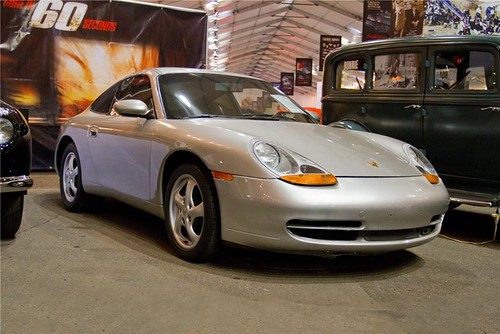
5. **Gone in 60 Seconds (1974) – The 128-foot Jump**Before the days of massive studio budgets and widespread CGI, there were filmmakers like H.B. Halicki, a Long Beach, California junkyard owner who wrote, directed, produced, financed, and starred in his own opus, “Gone in 60 Seconds.” This film is legendary for its raw, unfiltered automotive insanity, culminating in a chase sequence that wrecked 93 cars and still ranks as one of film history’s longest and most chaotic.
The film’s feature car, a 1973 Ford Mustang affectionately named “Eleanor,” became an icon in its own right. The most standout moment of this epic chase was Eleanor’s astounding 128-foot jump, reaching an altitude of 30 feet. What makes this stunt even more incredible is that it was achieved without the aid of pistons, boosters, or any CGI—it was pure, unadulterated stunt driving and engineering.
H.B. Halicki himself, in addition to his myriad roles behind the scenes, was behind the wheel for this perilous jump. The personal cost was significant; he reportedly compressed 10 vertebrae in performing it, a stark reminder of the very real risks involved in this era of filmmaking. This feat set a standard for car jumps, showcasing a skin-of-your-teeth approach to action that has captivated fans for decades, proving that grit and determination can achieve truly legendary cinematic moments.

6. **Casino Royale (2006) – The Aston Martin Barrel Rolls**Daniel Craig’s debut as James Bond in “Casino Royale” was widely celebrated as a gritty, more in-your-face return to form for the iconic spy. The film consistently upped the ante with its action scenes, and when it came time for one of the key car stunts, the filmmakers decided to go all out, making cinematic history in the process. It was a clear statement that this Bond meant business.
In a pivotal moment, Bond, pursuing a kidnapped Vesper Lynd, is forced to swerve dramatically to avoid her being left in the middle of the road. This sends his magnificent Aston Martin DBS into an excruciatingly long series of barrel rolls. This wasn’t a gentle tumble; it was a violent, record-breaking cascade of flips. The stunt was accomplished using a specialized piece of equipment called a McQ cannon, which punches a metal ram out of the base of the car, initiating the rolls with explosive force.
The result was a Guinness Book of World Records-worthy series of rolls, making it the highest number of cannon rolls ever achieved in a film. While it was painful to watch such a beautiful car meet its demise, the impact of this practical, record-setting stunt on the audience and the franchise was immense. It perfectly encapsulated the film’s raw energy and commitment to authentic, thrilling action, leaving an indelible mark on cinematic stunt history.
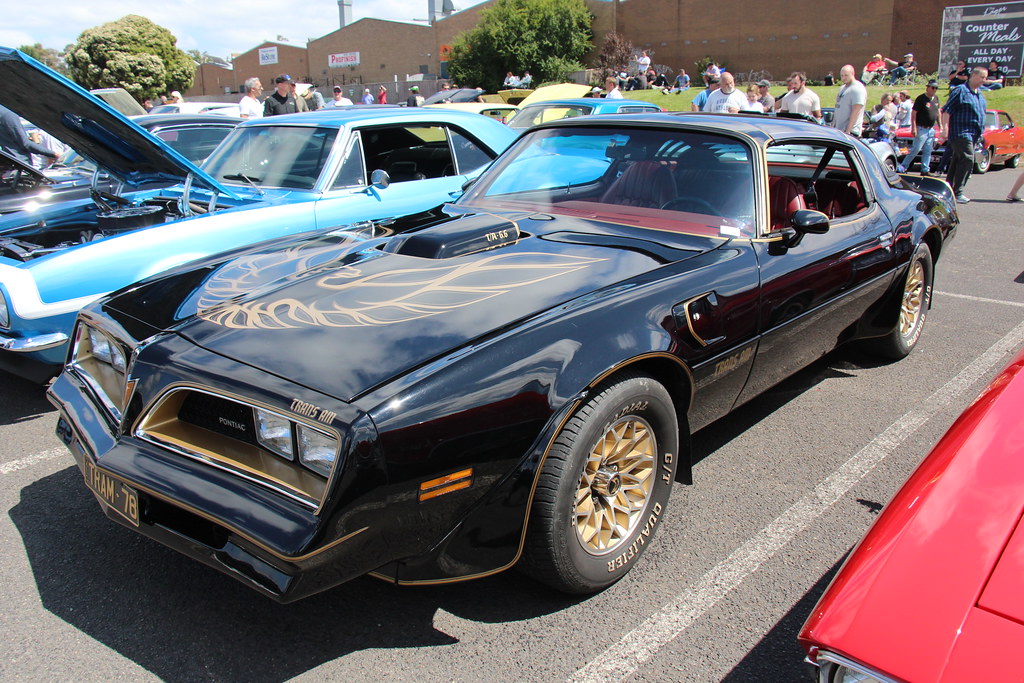
7. **Smokey and the Bandit (1977) – The 70-foot River Jump**Hal Needham, a true legend in the stunt world, started his professional career as a stunt performer before becoming a director. So, it comes as no surprise that his directorial efforts, like the Burt Reynolds action-comedy classic “Smokey and the Bandit,” would push the envelope with car stunts. Essentially a feature-length chase scene, the movie is packed with automotive carnage, featuring the iconic black 1977 Pontiac Trans Am as its hero vehicle.
Despite the frequent abuse the Trans Am endured, it always seemed to emerge shiny in the next scene, adding to the film’s charm. However, one signature stunt actually led to the vehicle’s destruction. Cornered by the police at a defunct bridge over the Jonesboro River, the Bandit risks everything and decides to make an audacious jump. This 70-foot launch was performed by stunt driver Alan Gibbs in a generally unmodified version of the Trans Am, though Needham did employ a booster for the necessary speed and lift.
The car used for this leap was ultimately wrecked, but it met its end in service of a truly thrilling and memorable moment in the pantheon of Hollywood car stunts. This scene perfectly captures the spirit of 1970s action cinema—raw, audacious, and a testament to the incredible skill and bravery of stunt performers. It remains a beloved classic, showcasing the excitement that only practical, death-defying feats can deliver to the silver screen.
Alright, gearheads, if you thought the first seven stunts were wild, hold onto your steering wheels, because we’re just getting warmed up! Hollywood’s quest for that perfect, pulse-pounding, real-deal car action doesn’t stop, and neither do the incredible risks taken by stunt performers and stars. We’re diving deeper into the history books to unearth more legendary car stunts that redefined precision, destruction, and daring, leaving an indelible mark on action cinema.
These aren’t just scenes; they’re moments of automotive artistry that demand a closer look. From sideways jumps through impossible gaps to trucks plummeting into canals and entire towns getting wrecked by speeding vehicles, these next seven examples truly showcase the lengths filmmakers will go to deliver that raw, unadulterated thrill. So, let’s peel back the layers on another batch of cinematic miracles where rubber met road in the most spectacular and unforgettable ways imaginable.
Car Model Information: 2023 Dodge Charger GT
Name: Pontiac Firebird
Caption: The second, third, and fourth generations of,the Pontiac Firebird Trans Am
Manufacturer: Pontiac (automobile)
Production: February 23, 1967 – August 30, 2002
ModelYears: 1967 – 2002
Class: Pony car,Muscle car
Platform: GM F platform
Related: Chevrolet Camaro
Layout: Front engine, rear-wheel-drive layout
Categories: 1970s cars, 1980s cars, 1990s cars, 2000s cars, All articles with dead external links
Summary: The Pontiac Firebird is an American automobile built and produced by Pontiac from the 1967 to 2002 model years. Designed as a pony car to compete with the Ford Mustang, it was introduced on February 23, 1967, five months after GM’s Chevrolet division’s platform-sharing Camaro. This also coincided with the release of the 1967 Mercury Cougar, Ford’s upscale, platform-sharing version of the Mustang.
The name “Firebird” was also previously used by GM for the General Motors Firebird series of concept cars in the 1950s.
Get more information about: Pontiac Firebird
Buying a high-performing used car >>>
Brand: Pontiac Model: Trans Am
Price: $26,690 Mileage: 19,257 mi.
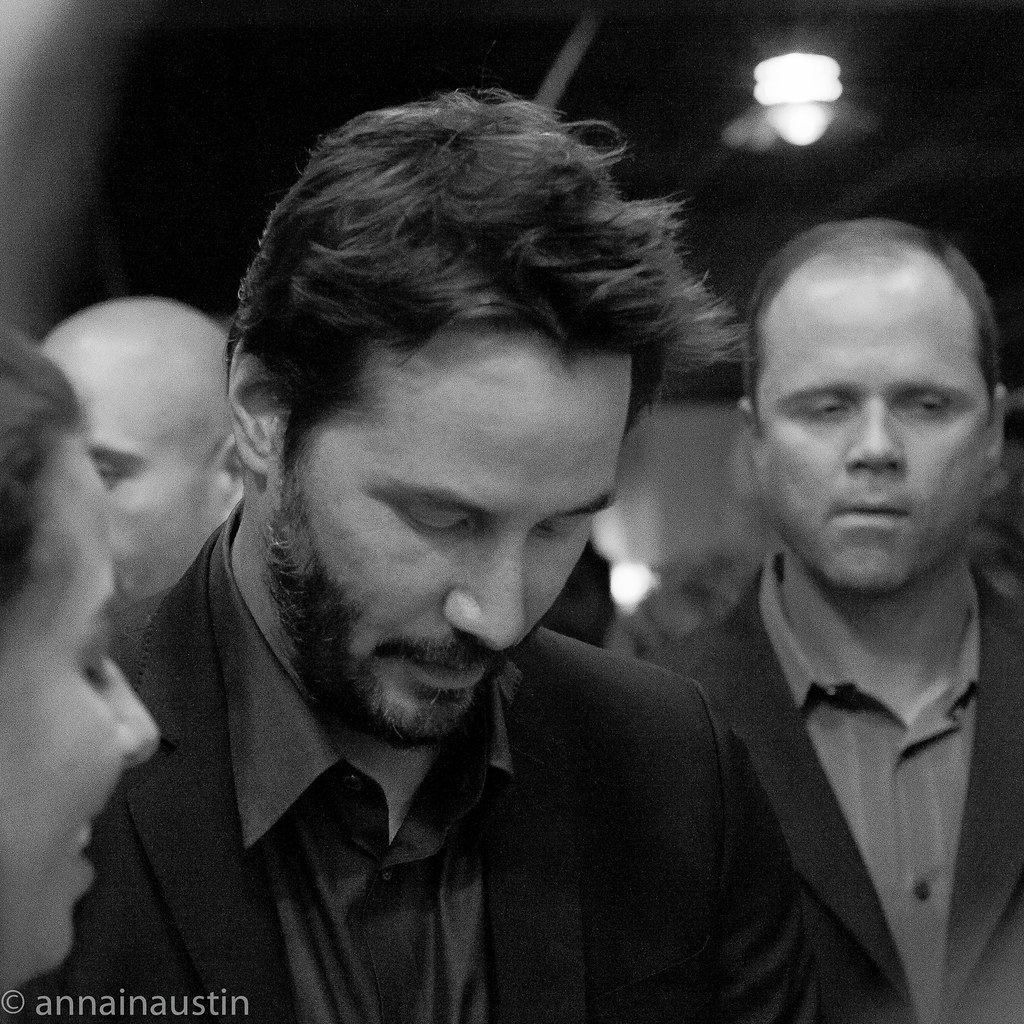
8. **John Wick 2 (2017) – The Sideways Warehouse Jump**When “John Wick” burst onto the scene in 2014, it was like a breath of fresh air for action films, proving that audiences still crave practical effects and incredible stunt work over endless CGI. The sequel, “John Wick 2,” kept that high-octane spirit alive, kicking off with an opening car chase that cemented the franchise’s commitment to jaw-dropping, real-world action. It was a clear statement: Wick meant business, and so did the stunt team.
One of the standout moments from this explosive sequence might seem quick, but it’s a true masterclass in precision driving and stunt coordination. Mid-way through the chase, John Wick’s 1969 Ford Mustang Mach 1 executes a sliding, sideways jump straight through an open warehouse door. It’s the kind of blink-and-you-miss-it detail that, upon reflection, makes you wonder how on earth they pulled it off with such seamless perfection.
As the movie’s stunt coordinator later detailed, this particular stunt demanded an immense amount of precision. Performing a sideways drift jump through a tight opening, especially in the rain as depicted in the film, is incredibly difficult. It wasn’t just about speed; it was about exact timing and control, a testament to the skill of the seasoned stuntman behind the wheel, even if it meant sacrificing one Mustang in the process.
This seamless execution is what makes “John Wick 2” so memorable. It’s a prime example of how dedication to practical stunt work, even for a quick beat in a bigger chase, can elevate a scene from good to legendary. The film reaffirmed that real people doing crazy things on camera resonate deeply, proving that authenticity in action is an art form worth preserving.
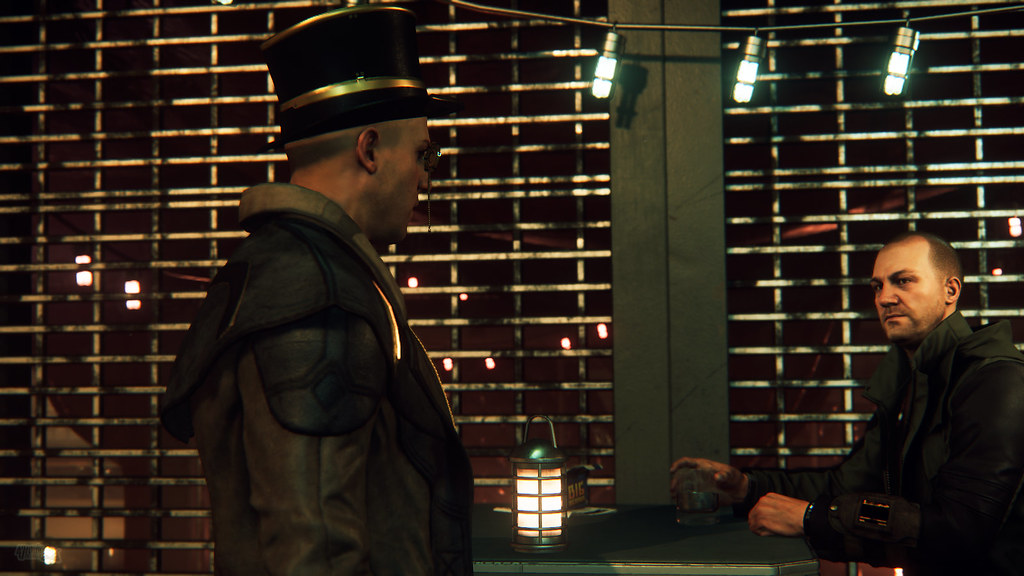
9. **The Man With the Golden Gun (1974) – The Astro Spiral Jump**James Bond films are iconic for their exotic locales, slick gadgets, and, of course, thrilling car chases. While “The Man with the Golden Gun” might not be one of 007’s most critically acclaimed outings, it undoubtedly features one of the most innovative and visually spectacular car stunts ever captured on film. It’s a classic case of an unforgettable moment shining brightly within its cinematic home.
Faced with the challenge of crossing a river without an intact bridge, Bond, portrayed by Roger Moore, improvises in true 007 fashion. He commandeers a 1974 AMC Hornet X and uses a twisted bridge to execute a truly mind-bending, spiraling jump across the watery expanse. This wasn’t just a simple leap; it was a corkscrew flip, a feat of automotive acrobatics that looked almost impossibly cool.
What makes this stunt even more fascinating is its meticulous planning. The “astro spiral” jump was initially plotted using a computer simulation at the Cornell Aeronautical Laboratory – a pioneering use of technology for stunt choreography at the time. When it came to execution, stunt driver Loren “Bumps” Willert performed the entire complex maneuver in a single take, a testament to his incredible skill and the precision of the planning.
While the beauty of this slow-motion, record-setting jump was somewhat undercut by the film’s controversial comedic slide whistle effect, a decision that both composer John Barry and producer Albert Broccoli later regretted, its historical significance remains unchallenged. It was the world’s first “astro spiral” jump ever caught on film, forever cementing its place in the annals of cinematic stunt history.

10. **Terminator 2: Judgment Day (1991) – The Big Rig Overpass Drop**”Terminator 2: Judgment Day” redefined action cinema with its revolutionary computer-generated morphing effects, but it also brilliantly blended this digital wizardry with some of the most visceral and impactful practical stunts of its era. James Cameron’s commitment to tangible action ensured that even as the T-1000 melted and reformed, the destruction felt utterly real and terrifyingly immediate.
Early in the film, audiences are treated to a relentless chase sequence as the shapeshifting T-1000, in its relentless pursuit of a young John Connor, commandeers a massive big rig truck. The scene brilliantly showcases the machine’s single-minded, unstoppable nature as it plows through anything in its path, transforming a heavy-duty vehicle into an instrument of pure, unyielding destruction.
The climax of this chase is an absolutely jaw-dropping moment: the T-1000 drives the big rig off an overpass, sending the massive truck plummeting into the Los Angeles Drainage Canal system below. While the overpass wall was a cleverly constructed fake for the cameras, the sheer 100% real drop of the truck was a monumental practical effect. It was a spectacular display of raw power and cinematic engineering.
This sequence perfectly exemplified how “T2” masterfully combined groundbreaking visual effects with awesome practical stunt efforts. The sight of that massive vehicle falling, crashing, and continuing its pursuit provided an explosive, tangible sense of danger that truly immersed audiences in the high-stakes sci-fi action, proving that practical effects were still king for delivering visceral impact.

11. **Gator (1976) – Hal Needham’s Pickup Truck Roll and Leap**When you talk about legends in the stunt world, Hal Needham’s name quickly rises to the top. Starting his career as a stunt performer, Needham later transitioned into directing, bringing his deep understanding of practical action to films like “Gator,” a 1976 sequel to “White Lightning” that reunited him with Burt Reynolds. Though perhaps not as culturally impactful as some of their other collaborations, “Gator” is a treasure trove of raw, ’70s-era stunt work.
The film truly delivers on that “someone really could have died trying to get this shot” vibe, and one particular quick-hit maneuver stands out. It features Needham himself, in an incredible display of personal bravery and skill, performing a high-risk pickup truck roll and leap. This wasn’t a stunt for the faint of heart; it was a dance with disaster, perfectly illustrating the sheer audacity of practical filmmaking back then.
Needham’s execution of the stunt involved him hanging onto the side of a Ford pickup truck as it barreled over and through various obstacles. At a critical moment, Reynolds’ character reaches into the driver’s side window, pulls the steering wheel hard, and sends the truck into a violent roll. Needham, with split-second timing, has to leap clear, narrowly avoiding being crushed by the rolling vehicle. He famously mentioned in later interviews that the truck’s fender missed his head by a mere 18 inches.
This hair-raising moment is a powerful reminder of the very real stakes involved in 1970s action cinema. It showcases a raw, unfiltered approach to stunt work that prioritized authenticity and thrills above all else. Had the roll not gone as planned, it could have spelled disaster, but instead, it became another legendary Hal Needham moment, etching his name further into the pantheon of cinema’s most audacious stunt performers.
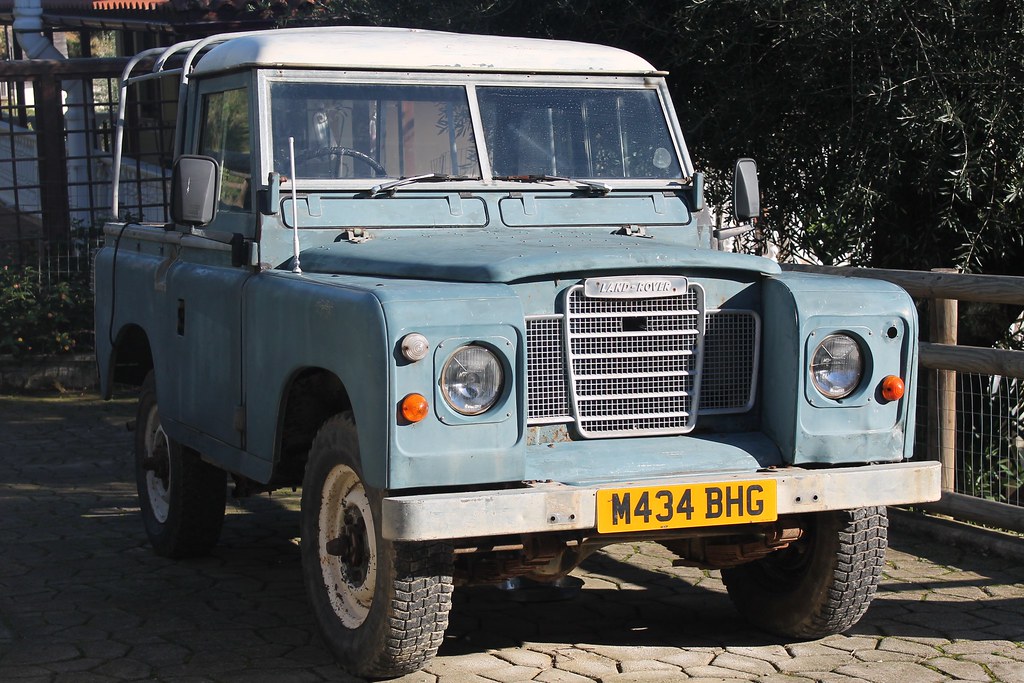
12. **Police Story (1985) – The Shantytown Destruction Chase**Jackie Chan and his incredible stunt team have achieved legendary status for consistently pushing the envelope, fearlessly diving into action sequences that make viewers genuinely wonder how anyone survived. “Police Story,” released in 1985, is a quintessential example of their unparalleled dedication to death-defying exploits, a film packed to the brim with stunts that are as mind-boggling as they are thrilling.
The film’s opening act immediately sets the tone with an absolutely insane car chase that escalates quickly. When a police sting operation to capture a local drug lord goes sideways, the pursuit spills into a hillside shantytown. In most films, this scenario would lead to a foot chase, but “Police Story” takes things to an entirely new level by making it a full-blown vehicular rampage.
What unfolds is pure, unadulterated chaos as both the heroes and villains drive directly through buildings, absolutely wrecking the shantytown in the process. We’re talking about random explosions, shanty after shanty getting obliterated, and even a gripping driver’s-eye view of a car’s windshield cracking, all designed to amplify the intensity of the destruction. Even by Jackie Chan’s famously high standards, this sequence is utterly nuts.
“Police Story” remains a prime example of Chan’s commitment to practical, extreme action. It’s a sequence that showcases not just incredible driving skill and stunt choreography, but a willingness to embrace widespread, tangible destruction for the sake of cinematic spectacle. It’s a hallmark of a career built on fearless execution and remains a benchmark for vehicular mayhem.
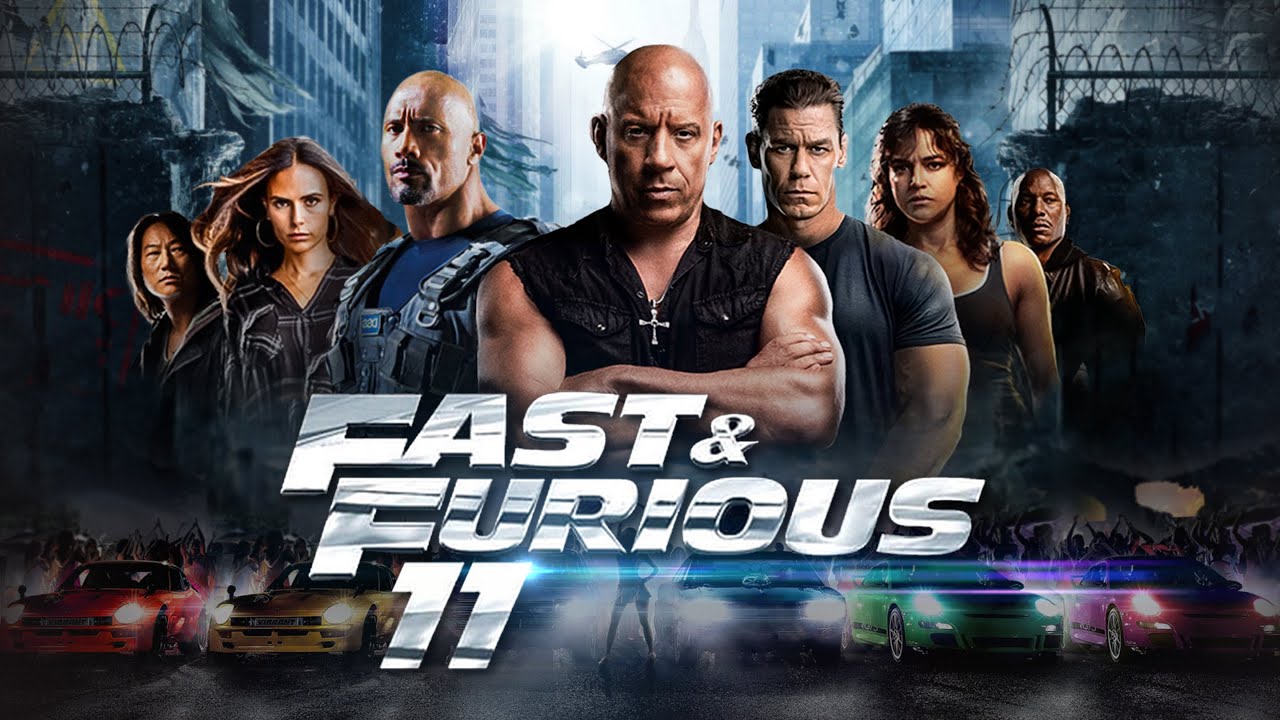
13. **The Fast and the Furious (2001) – Train Track Jump and Rolling Flip**Long before cars were flying to space or swinging from rope bridges with the help of extensive CGI, “The Fast and the Furious” franchise started with a more grounded, yet equally pulse-pounding, take on automotive action. Its earliest incarnation was less about digital wizardry and more about gearhead intensity and white-knuckle practical stunts, laying the groundwork for the global phenomenon it would become.
The original film culminates in a truly iconic final race between Vin Diesel’s charismatic criminal Dominic Toretto and Paul Walker’s undercover FBI agent Brian O’Conner. This sequence features two critical, adrenaline-pumping moments that stand out in the franchise’s history. First, both drivers’ cars are forced to jump over active train tracks, narrowly clearing an onrushing freight train in a heart-stopping display of timing and nerve.
But the action doesn’t stop there. Immediately following the train track jump, Toretto’s beloved Dodge Charger is T-boned by a truck, sending it into a spectacular horizontal flip and roll. The impact and subsequent violent rotation are made all the more awesome by the shot we get from inside O’Conner’s car, witnessing the chaos up close. Stunt driver Tim Trella was behind the wheel for this incredibly well-executed and memorable beat.
This raw, unvarnished practical stunt work is what defined the initial success of “The Fast and the Furious.” It delivered tangible danger and excitement, proving that well-choreographed, real-life vehicular mayhem could captivate audiences without needing to bend the laws of physics digitally. It remains one of the best-executed and most enduring beats in the franchise’s long and storied history.

14. **The Bourne Identity (2002) – The Mini Cooper Chase in Paris**Jason Bourne’s debut film, “The Bourne Identity,” injected a new kind of grounded, gritty realism into the spy genre, and its car chases were no exception. Far from the high-tech gadgets and exotic supercars often seen in other spy thrillers, Bourne’s automotive escapades relied on ingenuity, skill, and the surprising maneuverability of an unassuming vehicle, making for intensely relatable and thrilling action.
One of the film’s most celebrated sequences takes place on the narrow, winding streets of Paris. Jason Bourne, desperate to evade the authorities, commandeers a classic Mini Cooper. This choice of vehicle is brilliant, perfectly suiting the tight, ancient urban landscape, and signaling that this chase would be about precision driving and cunning, rather than brute force or sheer speed.
What follows is a masterful display of controlled chaos. Bourne pushes the tiny Mini to its limits, expertly weaving through cobblestone alleyways, dodging police vehicles, and even careening down bumpy staircases. The chase highlights the car’s agility and Bourne’s exceptional driving skills, allowing him to navigate seemingly impossible spaces and maintain his lead against his pursuers.
The Mini Cooper chase in “The Bourne Identity” stands as a testament to intelligent, practical action. It proved that a high-stakes car chase doesn’t always need millions of dollars in destroyed vehicles or CGI explosions to be effective. Instead, it can captivate audiences with raw driving talent, smart choreography, and the sheer thrill of watching a small car conquer an imposing urban environment, leaving an unforgettable impression of realistic, high-tension escapism.
Car Model Information: 2023 MINI Hardtop Cooper S
Sp: uk
Caption: 1959 Morris Mini-Minor (first one built)
Name: Mini
Aka: Austin 850,Rover Mini,Austin Cooper,Austin Mini,Austin Partner,Austin Seven,Innocenti Mini,Leyland Mini,Morris 850,Morris Mascot,Morris Mini Minor,Riley Elf,Wolseley 1000 (South Africa),Wolseley Hornet
Layout: Front-engine, front-wheel-drive layout
Manufacturer: British Motor Corporation,British Leyland,Rover Group
Production: 1959–2000 (5.38 million)
Class: City car
BodyStyle: sedan (car),convertible,Station wagon,sedan delivery,coupe utility
Engine: BMC A-series engine,Straight-four engine
Designer: Alec Issigonis,John Sheppard (car designer)
Transmission: 4-speed manual,AP automatic transmission,5-speed manual (optional extra on some later models)
Length: cvt,cvt,cvt
Width: cvt
Height: cvt
Weight: cvt
Wheelbase: cvt,cvt
Related: Mini Moke,Austin Metro,Innocenti Mini,Mini Wildgoose,Mini Marcos
Successor: Austin Metro,Mini Hatch
Assembly: Panmure, New Zealand
Categories: 1960s cars, 1970s cars, 1980s cars, 1990s cars, 2000s cars
Summary: The Mini is a very small two-door, four-seat car, produced for four decades over a single generation, with many names and variants, by the British Motor Corporation (BMC) and its successors British Leyland and the Rover Group, and finally (briefly) under BMW ownership. Minis were built as fastbacks, estates, convertibles, and various other body styles. Minus a brief 1990s hiatus, from 1959 into 2000, an estimated 5.38 million of all variations combined were built, and the Mini’s engines also powered another 2 million Mini Metros, though the Mini eventually outlasted its successor.
Initially, the Mini was marketed under the Austin and Morris names, as the Austin Seven and Morris Mini-Minor; the Austin Seven was renamed Austin Mini in 1962 and Mini became a marque in its own right in 1969. Retrospectively, the car is known as the “Classic Mini” to distinguish it from the modern MINI family of vehicles produced since 2001 by German carmaker BMW, who took ownership of the Mini name following the sale of Rover Group in 2000.
This distinctive two-door car was designed for BMC by Sir Alec Issigonis. Its space-saving transverse engine and front-wheel drive layout – allowing 80% of the area of the car’s floorpan to be used for passengers and luggage – influenced a generation of car makers. The front-wheel-drive, transverse-engine layout were used in many other “supermini” style car designs such as Honda N360 (1967), Nissan Cherry (1970), and Fiat 127 (1971). The layout was also adapted for larger subcompact designs. In 1999, the Mini was voted the second-most influential car of the 20th century, behind the Ford Model T, and ahead of the Citroën DS and Volkswagen Beetle. It is also considered an icon of 1960s British popular culture.
The Mini Mark I had three major UK updates: the Mark II, the Clubman, and the Mark III. Within these was a series of variations, including an estate car, a pick-up, a van, and the Mini Moke, a jeep-like buggy. The performance versions, the Mini Cooper and Cooper “S”, were successful as both race and rally cars, winning the Monte Carlo Rally in 1964, 1965, and 1967. The Mini was manufactured in England at the Longbridge plant in Birmingham located next to BMC’s headquarters and at the former Morris Motors plant at Cowley, as well as in Australia (Victoria Park/Zetland BMC Australia factory) and later also in Spain (Authi), Belgium, Italy (Innocenti, as the Innocenti Mini), Chile, Malta, Portugal, South Africa, Uruguay, Venezuela, and Yugoslavia (IMV). In 1980, British Leyland launched the Mini’s follow-up, the Austin Metro, however the Mini outlasted it and continued to be produced at Longbridge until October 2000.
Get more information about: Mini
Buying a high-performing used car >>>
Brand: Mini Model: Cooper
Price: $19,499 Mileage: 34,875 mi.
From semi-trucks flipping in Chicago to classic Minis navigating Parisian alleyways, Hollywood’s obsession with epic car stunts is more than just a spectacle; it’s a testament to human ingenuity, mechanical precision, and the sheer nerve of the individuals who bring these moments to life. While digital effects offer boundless possibilities, there’s a unique, irreplaceable thrill in knowing that what you’re seeing on screen truly happened—real metal, real speed, and real people pushing the limits. These legendary car stunts aren’t just expensive scenes; they are platinum-level proof that the heart-pounding impact of practical effects remains invaluable in the ever-evolving landscape of action cinema, cementing their place in film history as truly unforgettable.




